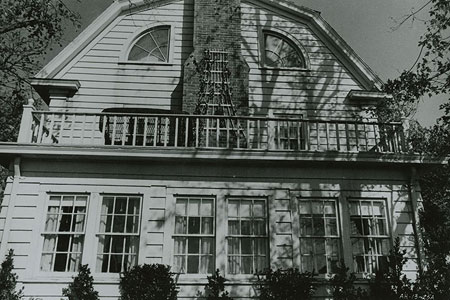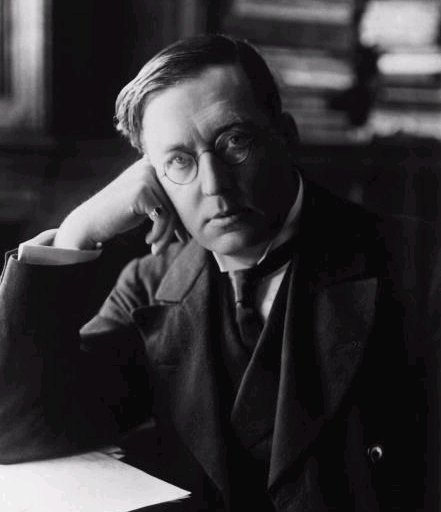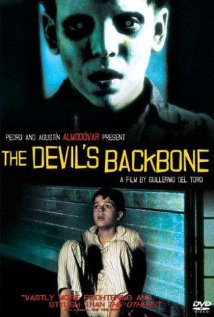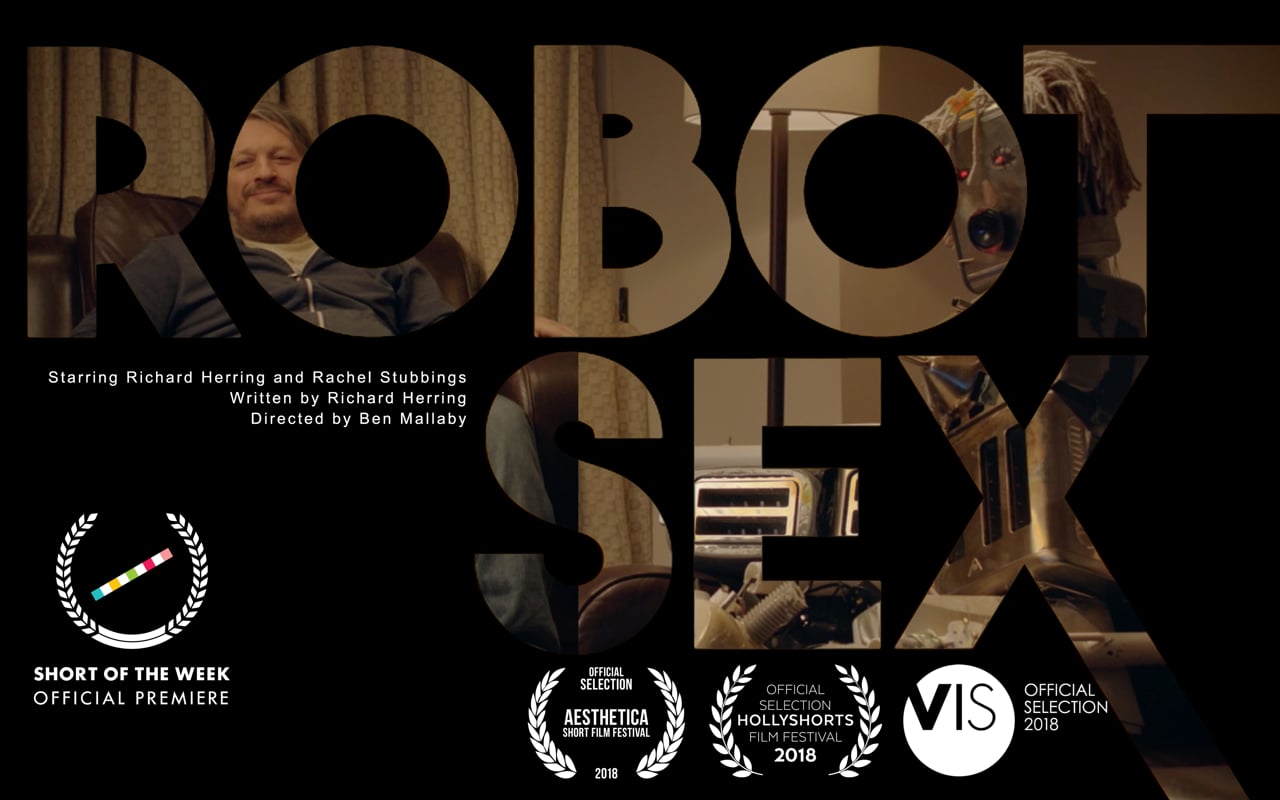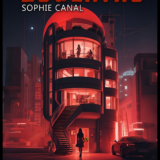Moving Pictures, Silent Films;
Haunted Houses on the Screen
Seeing as how Western society is predominantly visual, it stands to reason that we begin with the presence of Haunted Houses in movies and on television. Being a visual culture, and owing to rapidly plummeting attention spans, movies and TV shows stand to reach the greatest number of audience, meaning they have the most impact, and tend to say the most, about pertinent cultural trends. Call it pop, mass media, pandering to the crowds, but mainstream media is like the collected unconscious of an era, splayed out 12 feet tall, begging to have its bones picked bare.
There are a billion little societal and psychological factors that are coming to light, during my research. Each one which could merit an interesting book, in its own right. I feel like I’m getting a Ph. D. in horror, on a shoestring budget. I’ll cover as many as time and space allow.
The Aesthetics Of Horror
One of the main ways that the horror genre infiltrates media is with tropes or cliches, call them memes if you want. The squealing strings, lengthy shadows, bats flying in the night, a woman recoiling in terror. These iconic images infect our dreams, make their way into music videos and video games, commercials and advertisements. We are all to understand that these things signify HORROR; they hit us on an instinctual level, bringing to mind the bogies and specters of childhood, when we first encounter the macabre. Call them signs or signifiers: they show that you have walked out of the safety of consensual reality, into the darkness.
By deconstructing popular horror forms, you learn to recognize them, begin to understand their psychological and symbolic meaning, like Freudian dream analysis on a mass scale. So we will be looking at some of the classic forms, in this case, of the Haunted House genre.
The best way to become familiar with a genre, like a language, is immersion. I am here to provide you a breadcrumb trail to dark delights, some lost and forgotten haunted house movies and television that you might not have seen. Get lost in long hallways, stare into darkened mirrors, waiting expectantly for doors to open themselves with pounding pulse. Living with horror raises the possibility of what is possible, outside of rationality, beyond logic. It raises the blood, makes your hair stand on end, makes you feel alive.
This list is not intended to be definitive; there are far too many excellent films or TV shows to get them all in one go. This is a small sampling, some of my favorites that I have collated during years of fanatical research. I will continue to highlight exceptional examples of horror, at my Forestpunk blog. I do not pretend to be a film expert, but writing these Deconstructing Horror articles is giving me a chance to go back through decades of art, trying to make sense of it all.
M. R. James
M. R. James’ name is synonymous with ghost stories. Famous for updating the style, stripping it of its Gothic cliches, and bringing the form into the 20th century. He was, however, an antiquarian and medieval scholar, and many of his stories are still steeped in a decadent, Edwardian air.
Many of his stories have been adapted for the silver screen. He was the source for a particular morbid British tradition, A Ghost Story For Christmas, which are all good and worth seeking out (especially if you are looking for a new dark ritual for your own holidays), but many of them fall into the more general ghost story genre.
Lost Hearts fits the bill, however, a fine Gothic haunted house tale. It tells the tale of young master Steven, sent to stay with his crazy old uncle in his dilapidated country mansion. Uncle is a renowned sorcerer and alchemist, and Steven begins to be visited by the apparition of two dancing specters, warning him that he is in danger.
More creepy or atmospheric than outright frightening, it is steeped in ’70s horror psychedelia, Kodachrome surrealism all blurred around the edges. Like all of the James’ adaptations, it is downright beautiful and inspiring. It will infect your inner world, your mind’s eye, with its decadent romance. Stylized and stylish. wiki
BURNT OFFERINGS
Burnt Offerings is another funky ’70s psychotropic masterpiece. Slightly better known than many others featured on this list, I stumbled upon it quite by accident, and was quite delighted with its atmosphere and grimy aura.
It tells the tales of the Rolf family, played by a young(er) Karen Black (House Of 1000 Corpses/Devil’s Rejects) and Oliver Reed (The Devils), alongside a much older Bette Davis and Burgess Meredith. The family gets a killer deal on a gorgeous country estate, (filmed at the Dunsmuir House in Oakland, Ca.) from the eccentric old Allardyces, on the condition that they look after their decrepit mother.
This film features a number of classic haunted house tropes. The house itself seems to be alive, have a mind and a will of its own. The film features a fine illustration of the Father As Killer Ogre theme (in the legitimately disturbing pool sequence), later perfected in Stephen King’s The Shining. It also goes to show what lengths people will go to feel rich, a moldy shadow of the American Dream. Burnt Offerings also highlights one of the main thrills of the haunted house genre, which is the house themselves, and their histories. The house seems to be shaking off its dust and languor, returning itself to youth and splendour. The Dunsmuir House is a gorgeous old relic, and this film is worth watching, merely to walk around its interior.
The film is not perfect; the characters are often unlikable and unsympathetic, but the Gothic setting of the Dunsmuir House and the ’70s aura (a high point for the horror genre) make it a notable addition to the cannon. It also features a memorable score by Robert Cobert, a classic example of the creepy, light piano score, often found in ’70s horror, that instantly instills a feeling of atmospheric dread! wiki
THE DEVIL’S BACKBONE (2001)
The Devil’s Backbone, directed by Guillermo Del Toro, is hands down, my favorite ghost movie of all time. Eerie, beautiful, surreal, it takes haunted house movies to a new artistic peak.
Technically, this movie should be filed under Haunted Institutions, (which I hope to write about at a later date,) because it takes place in an orphanage with a terrible secret, taking place during the Spanish Revolution. It showcases the horrors and wonders that are possible during
times of war, in a dreamy and stylized fairy tale way (that he would later refine and perfect with Pan’s Labyrinth, to great acclaim).
I felt the need to include this film on the inaugural list, so well does it illustrate some of the central themes I have been hinting at, here at AS. Del Toro’s movies are a glorious depiction of inverted spirituality, where miracles and torment are dished out evenly.
His movies are so dang beautiful, that its hard to be legitimately creeped out by them, but then he will turn the tables and hit you with a beautiful dark sledgehammer of ghastly images, all the more effective in sharp contrast. The second reason is: Del Toro’s ghosts are THE BEST! Beautiful, terrifying, both repulsive and attractive simultaneously. If you are looking for a film that will make you see real ghosts, this would be it. And, lastly but not leastly, if one is to be a modern horror enthusiast, one must get used to non-English speaking films, as other countries take the lead in transgressive cinema. Del Toro’s movies are sharp and fast enough to keep you engaged, on the edge of your seat. You will forget that you are reading subtitles, and be swept away. Essential! wiki
How many times can you re-interpret The Turn Of The Screw? Plenty, apparently. The Innocents is quintessential Haunted House fare. It tells the story of a young governess, Miss Giddens, who moves to a desolate country estate to take care of two children, Miles and Flora, whose uncle can’t be bothered with them.
They are both lovely and delightful children, until Ms. Giddens begins to suspect that something is amiss. She begins to discover the sordid history of the house, the family, which borders on Satanic. She begins to suspect that the children are being infiltrated by the spirits of the former servants.
Dark, creepy, genuinely frightening. A pillar of atmospheric dread, “the film achieves its effects through lighting, music and direction rather than conventional shocks. Its atmosphere was created by cinematographer Freddie Francis, who employed deep focus in many scenes, as well as bold, minimal lighting. (from Wikipedia). Miles and Flora, little angels that they are, are an excellent example of the Kids Are Creepy cliche, and this film features some possession themes, which are also standard fare to the genre. Classic, timeless; check out The Innocents for a dash of old world class, and to see the best of what haunted house films have to offer! wiki
American Horror Story – Season 1
I’m running out of time for this week, so I’ll leave you with this. The first season of the American Horror Story catapults the genre into the 21st century. Call it post-modern, hyper-modern, Ryan Murphy and Brad Falchuk‘s black-as-pitch tale of the Harmon Family, who move to a glamorous home in LA, to escape their past. Unfortunately, the house has a past of its own, which is all too alive and well.
AHS has it all: beatiful gothic mansion, plenty of history (they incorporate the Black Dahlia Murder at one point), several eras (depicted accurately and faithfully), murder, suicide, infidelity, freaks in the attic, a wormhole to another dimension in the basement. In the spirit of modernity, which seems to be everything all at once, or you can’t have too much of a good thing, American Horror Story takes all the classic cliches of the genre, and files them down to razor sharp perfection.
If you’re new to the genre, or have been away for a while, I would advise starting with this series, as a re-introduction. Its the newest of the bunch, so it’s the easiest to relate to. It’s fast, it’s sharp, it’s DEADLY and MEAN! This show will whet your appetite, prepare you to surround yourself with disembodied ghouls and nightshades clanking their chains down dilapidated hallways, all the livelong day. This is a great place to start, but be advised (and this is not just horror journalist hyperbole): BE CAREFUL. American Horror Story is brutal, damn disturbing at times. Its seeped in graphic violence, excessive sexuality. The first season is tolerable, tempering the gore and violence with atmosphere and history, maintaining a balance. The second season (which I will write about later) goes above and beyond, and had me paranoid that I was having a heart attack every night for a week.
Here in the future, we are refining perfecting everything that has gone before. For better or for worse.
I give American Horror Story 4.5 screaming skulls; near perfection. Its production values are high as flying buttresses, and its acting is sublime. It pulls you into its dark world, and won’t let you go until it’s all said and done, until the final bell is tolled. There is something seriously wrong with Ryan Murphy and Brad Falchuk, and it’s probably a good thing they’ve learned to funnel their lusts into film, rathert than something else.
That’s it for this week’s edition of Deconstructing Horror. Next time, we’ll look at how haunted house themes have worked their way into the world of sound, all the better to surround yourself in inky blackness!

